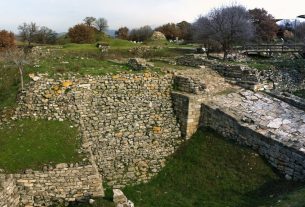The Yarnell Fire, the National Weather Service reports, raged for around two weeks, beginning on June 28, 2013. Unlike fires that start in homes from appliances left on or candles left unattended, this disaster began outdoors. A deadly combination of natural conditions combined to create the perfect scenario for the tragedy.
Yarnell, Arizona had been decidedly dry that year. This meant that the nearby hills were beset by dry lightning. Per CNN, this phenomenon happens during times of drought and is the result of a unique type of storm: one in which the accompanying rain does not fall because it simply evaporates in the warm air before doing so.
These two factors were basically a disaster waiting to happen, according to the National Weather Service. The area where the fire began was struck by more than 40 bolts of lightning. One of them hit a parched area of plant land, which was set aflame.
As its immediate vicinity was essentially kindling, the flames quickly gathered pace and became ferocious. National Centers For Environmental Information adds that June 30th marked another increase in the temperature, bolstering the fire (which had previously not spread uncontrollably) to the devastating levels it would later reach.



